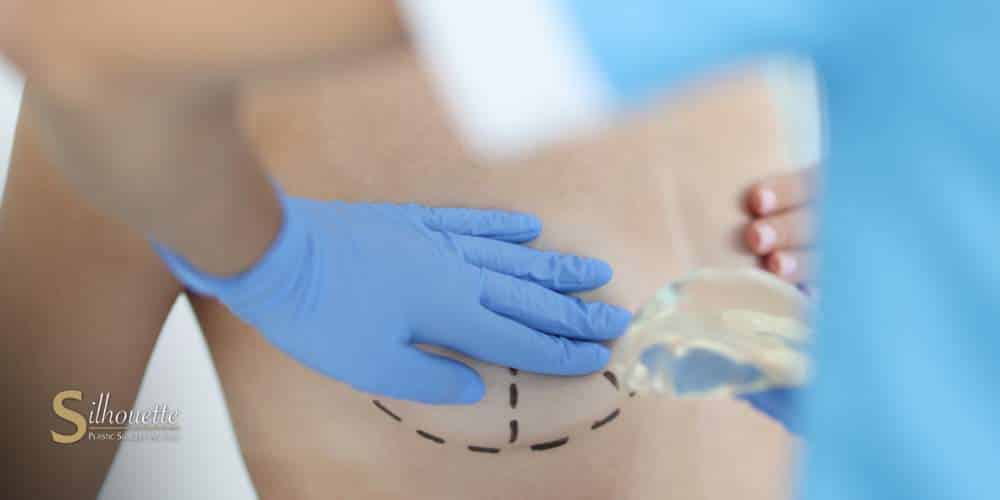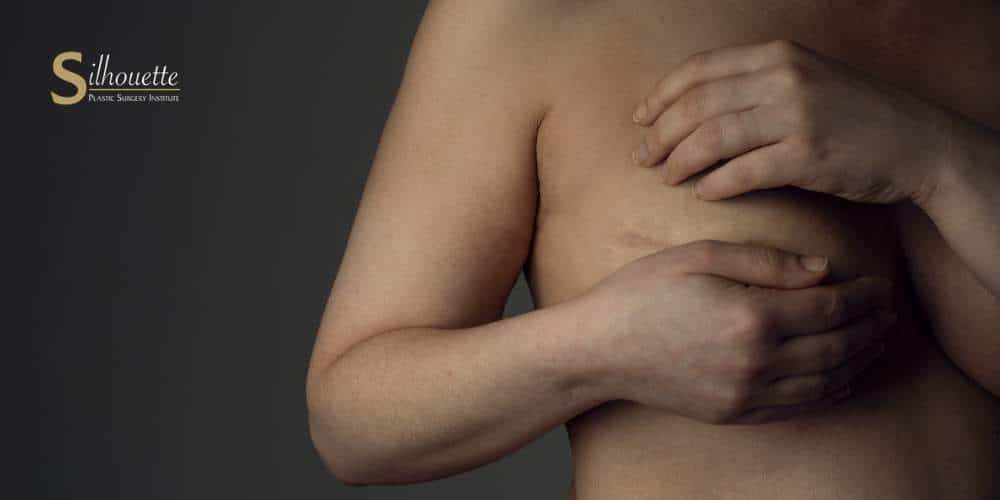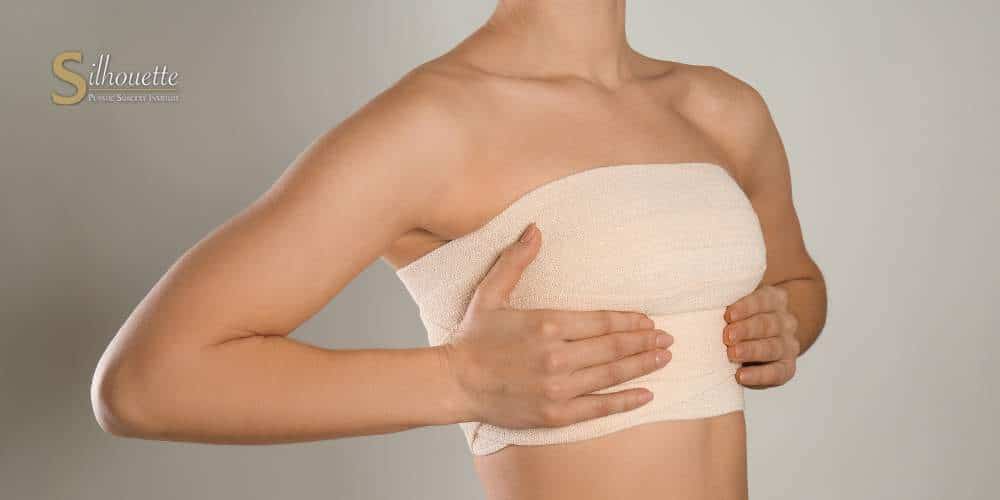Breast Cancer Reconstruction Surgeon in Bakersfield and Orange County, CA
Dr. Hootan Daneshmand is a renowned expert in breast reconstruction surgery after breast cancer treatment, dedicating his plastic surgery practice to providing specialized care for breast cancer patients in Bakersfield and Orange County, California.
Having helped numerous individuals diagnosed with breast cancer who have undergone radiation therapy, he offers a comprehensive range of services, including breast augmentation, breast lift, and breast reconstruction in Bakersfield. His expertise in performing reconstructive surgery extends to reconstructive surgery following a mastectomy to restore the body’s appearance and function.
As a respected Bakersfield breast reconstruction plastic surgeon, Dr. Daneshmand ensures that breast cancer patients receive the highest standard of care, helping them restore not only their physical appearance but also their confidence and well-being.
At Silhouette Plastic Surgery Institute, our board-certified breast surgeon, Dr. Daneshmand, offers a wide range of breast reconstruction options, providing compassionate care tailored to each patient’s needs. If you have been diagnosed with breast cancer and are considering your surgical options, contact us online to explore how we can support your journey toward recovery and renewal.

Breast Reconstruction After Mastectomy for Breast Cancer Treatment in Southern California
In Southern California, breast cancer patients undergoing breast cancer treatment, including radiation therapy, mastectomy or lumpectomy, have various reconstructive options to consider.
Top Orange County plastic surgeons utilize advanced techniques in reconstructive surgery to tailor breast reconstruction results that meet the individual needs and aesthetic preferences of each breast cancer patient. This personalized approach to breast reconstruction, using breast implants that mimic the look and feel of a natural breast helps in significantly improving the quality of life for women, empowering them to feel confident and reclaim their body image after battling breast cancer.
Legal Rights for Breast Cancer Patients
Breast cancer patients have specific legal rights when it comes to their treatment and recovery options.
Cancer Rights Act
Under the Women’s Health and Cancer Rights Act of 1999, group health plans that cover mastectomy are also required to provide coverage for breast reconstruction surgery. This means that after a mastectomy or lumpectomy, breast cancer patients can elect to undergo breast reconstruction surgery at any point once their oncologist clears them.
It’s important to note that while breast reconstruction surgery is considered an elective cosmetic surgery, it is a vital part of women’s health in this case.
An experienced Southern California breast augmentation surgeon can offer various types of breast reconstruction procedures, ensuring that each breast cancer patient receives care that best suits their needs.
What is the Timeframe From Breast Cancer Diagnosis to Mastectomy and Reconstruction?
The timeframe from being diagnosed with breast cancer to undergoing a mastectomy and subsequent breast reconstruction procedures can vary based on individual medical circumstances and patient choices.
Typically, scheduling a mastectomy or lumpectomy as part of the initial cancer treatment is determined quickly to prevent the spread of cancer.
Plastic surgeons can perform breast reconstruction surgery immediately following the mastectomy—known as immediate breast reconstruction—or at a later date, depending on the patient’s health, treatment plan, and personal preference.

What are the Different Types of Breast Cancer Reconstruction in Southern California?
Women have access to a variety of breast reconstruction options, allowing them to choose a path that best suits their needs following breast cancer treatment. Breast reconstruction options include using breast implants, which can recreate the shape and size of the natural breasts, and tissue-based procedures, where tissue from another part of the body is used to reconstruct the breast.
Some breast reconstruction surgeons also combine these breast reconstruction techniques or incorporate breast reduction surgery to enhance symmetry and comfort. Women who have undergone a lumpectomy may opt for a breast augmentation or breast reduction surgery to maintain balance.
Consulting with a skilled plastic surgeon is crucial to understanding the full spectrum of breast reconstruction options.
Tissue Expanders and Breast Implant Reconstruction
Tissue expanders and breast implant reconstruction are common breast reconstruction techniques to restore breast shape after a mastectomy. The process begins with inserting tissue expanders under the skin and muscles to stretch the skin, requiring multiple procedures to reach the necessary expansion. After sufficient stretching, these expanders are swapped for breast implants, customized to fit the woman’s body shape and size preferences. Additional surgeries like a breast lift may also be performed to improve symmetry along the abdominal muscle and aesthetic results.
Learn more about our Bakersfield breast lift procedure.
Replacing the Tissue Expanders With Breast Implants
Transitioning from the expander to a permanent implant typically occurs in a separate breast surgery, scheduled once the expanders have adequately stretched the skin. This reconstruction method allows the breast reconstruction surgeon to carefully shape and size the tissue.
Breast Implant Reconstruction With Silicone Implants
Patients often choose silicone implants for their ability to mimic the texture and movement of natural breast tissue.
Breast Implant Reconstruction With Saline Implants
Saline implants are often chosen by patients who prioritize adjustability and the reassurance of a substance that the body can easily absorb.
We cover this in more detail here: silicone vs saline implants.
Breast Implant Reconstruction With Gummy Bear Implants
Bakersfield gummy bear implants are firmer than traditional silicone implants and are designed to hold their shape better, offering a more natural slope and less likelihood of folding or rippling.
Autologous Tissue Reconstructive Surgery
Autologous tissue reconstructive surgery is a preferred method for many breast cancer patients, especially those who have undergone radiation therapy.
In this breast reconstruction technique, Bakersfield breast reconstruction surgeons reconstruct the breast using tissue transplanted from the patient’s own body. Most women favor this approach for achieving more natural-looking results, as the reconstructed breast feels similar to natural breast tissue. Breast reconstruction surgeons typically use tissue from the abdomen, back, or thighs and then shape it to recreate the breast.
This breast reconstruction method reduces the chances of rejection and integrates well with the body’s natural healing processes, making it a highly effective option for long-term breast reconstruction.
SIEA and DIEP Flap Procedure
The SIEA (Superficial Inferior Epigastric Artery) and DIEP (Deep Inferior Epigastric Perforator) flap procedures are advanced breast reconstruction techniques that use the patient’s tissue to create a natural appearance. In these breast reconstruction procedures, breast reconstruction surgeons carefully transfer skin, fat, and blood vessels from the lower abdomen to the chest, reconstructing the breast without the need for implants.
SIEA and DIEP flap procedures are often better for women who have undergone radiation therapy for breast cancer. Radiation therapy can leave the breast skin tight, scarred, and less elastic, making it difficult to achieve good results with breast implants alone.
Deep Inferior Epigastric Perforator
The DIEP flap procedure is a sophisticated form of breast reconstruction surgery that uses the patient’s own tissue to rebuild the breast following a mastectomy.Breast reconstruction urgeons carefully remove skin, fat, and blood vessels from the lower abdomen and transplant the tissue to the chest, where it is sculpted into the shape of a breast and connected to the chest blood vessels.
This breast surgery spares the abdominal muscles, which preserves abdominal strength and leads to less pain and a quicker recovery.
Superficial Inferior Epigastric Artery (SIEA)
The SIEA flap utilizes the superficial inferior epigastric artery and vein, which lie just below the skin. This breast reconstruction technique is less invasive to the abdominal wall, which can lead to a quicker recovery. However, not all breast cancer patients are candidates for an SIEA flap breast reconstruction surgery, as the presence and size of the superficial inferior epigastric vessels vary among individuals.
Stacked DIEP and Combination Flap Reconstruction
Stacked DIEP and combination flap reconstruction are advanced breast reconstruction techniques that offer enhanced outcomes for women undergoing mastectomy. The stacked DIEP flap procedure involves using multiple layers of tissue from the patient’s own abdomen to reconstruct the breast. This breast reconstruction method is particularly beneficial for women who require additional tissue to achieve a more substantial breast volume. On the other hand, combination flap reconstruction utilizes tissue from multiple donor sites on the body, such as the thigh or buttock, to create a more tailored and versatile reconstruction. This breast reconstruction approach can be ideal for patients who may not have enough abdominal tissue alone or require more complex reconstructions.
SHaEP Flap Reconstruction
This breast reconstruction technique uses tissue from the front and sides of the abdomen. The SHaEP flap extends the traditional DIEP flap by incorporating tissue from the hip area. This approach is particularly beneficial for breast cancer patients who need more extensive breast reconstruction but prefer to use natural tissue.
PAP Flap Reconstruction
The Profunda Artery Perforator flap (PAP Flap) reconstruction is a type of breast reconstruction surgery that uses tissue from the patient’s thigh to reconstruct the breast after a mastectomy. Often, women choose PAP Flap reconstructive surgery if they do not have enough abdominal tissue for other flap procedures.
IGAP/SGAP Flap Reconstruction
The Superior and Inferior Gluteal Artery Perforator Flaps (SGAP and IGAP) are advanced techniques used in breast reconstruction surgery. These breast reconstruction procedures involve harvesting skin and fat from the upper buttock area (SGAP) or the lower buttock area (IGAP) while leaving the muscle intact. The flaps are then transferred to the chest during breast reconstruction surgery following a mastectomy.
The SGAP and IGAP flaps benefit breast cancer patients with inadequate abdominal tissue for other flap procedures or prefer not to use their abdominal tissue.
TDAP/ICAP Flap Reconstruction
During a TDAP (Thoracodorsal Artery Perforator) flap reconstruction, breast reconstruction plastic surgeons perform an incision in the upper back to harvest skin, fat, and blood vessels. This tissue is then used to form a natural-looking reconstructed breast following a lumpectomy or mastectomy.
The ICAP (Intercostal Artery Perforator) flap reconstruction is similar to the TDAP, but the incision is made under the arm to gather the necessary tissue for breast reconstruction surgery.
TUG Flap Reconstruction
The Transverse Upper Gracilis (TUG) flap procedure is a popular breast reconstruction surgery technique following a mastectomy. This type of breast reconstruction surgery requires skin and fat tissue from the inner thigh to reconstruct the breast mound.
Nipple Sparing Mastectomy
Nipple-sparing mastectomy is a surgical technique where the breast tissue is removed while preserving the nipple and areola complex. This approach allows for a more natural-looking breast appearance post-surgery. Nipple-sparing mastectomy surgeons carefully evaluate breast cancer patients to determine their suitability for this breast reconstruction procedure, considering factors such as tumor location, size, and proximity to the nipple.
Nipple-sparing mastectomy is often combined with immediate breast reconstruction options, such as implant-based reconstruction or autologous tissue flap reconstruction, to achieve natural-looking results while maintaining nipple viability.
Nipple Reconstruction Surgery
Nipple reconstruction is a vital part of breast reconstruction surgery, focusing on restoring the nipple’s appearance and projection following mastectomy. The goal of breast reconstruction surgery is to recreate a natural-looking nipple that complements the shape and contour of the reconstructed breast. Breast reconstruction surgeons use techniques such as local tissue rearrangement or skin grafts to sculpt a nipple that resembles the original in size, position, and shape.
Opposite Breast Reconstruction Surgery
Opposite breast reconstruction surgery is essential to restore symmetry and balance for women who have undergone mastectomy of only one breast as part of their breast cancer treatment. Opposite breast reconstruction surgeons focus on balancing the appearance of the reconstructed breast with the unaffected opposite breast through techniques such as breast augmentation, breast reduction, or a breast lift.

Does Breast Reconstruction Affect the Risk of Breast Cancer Reoccurrence?
Breast reconstruction procedures do not directly affect the risk of breast cancer recurrence. Breast reconstruction surgeries are primarily focused on restoring the appearance of the breast following mastectomy or lumpectomy.
While some women may undergo multiple procedures as part of their breast reconstruction journey, the risk of breast cancer reoccurrence is determined by factors such as the stage of the original cancer, the effectiveness of the initial breast cancer treatment, and individual biological factors.
Healing Process for Breast Reconstruction Surgery
The healing process for breast reconstruction surgery varies for each patient and depends on factors such as the type of breast reconstruction procedure performed, individual health status, and post-operative care.
Some women have a recovery time of several weeks while other women take a few months to recover. During this time, it’s essential to follow post-operative instructions provided by the Bakersfield breast surgeon and attend follow-up appointments for monitoring and any necessary adjustments.
One common concern during recovery is the development of capsular contracture, where scar tissue forms around breast implants, potentially causing pain or distortion. However, with proper follow-up care and monitoring by a skilled Bakersfield plastic surgeon, many women successfully avoid or heal from capsular contracture and achieve the desired results from their breast augmentation or breast reconstruction surgery.
Orange County Breast Reconstruction Surgery Before and After
Breast reconstruction surgery at Silhouette Plastic Surgery Institute delivers remarkable breast reconstruction before-and-after transformations.
Board-certified breast reconstruction plastic surgeon Dr. Hootan Daneshmand offers a range of plastic surgery procedures, including breast reduction, breast lift, breast augmentation, and various types of breast reconstruction tailored to each patient’s unique needs and desires.
Whether considering cosmetic surgery for aesthetic enhancement or breast reconstruction surgery following mastectomy, Dr. Daneshmand’s plastic surgery expertise ensures natural-looking and satisfying results.

Top Breast Cancer Reconstructive Surgery in Bakersfield and Orange County, California
Experience compassionate care and exceptional results at Silhouette Plastic Surgery Institute. As a leading breast reconstruction plastic surgeon in southern California, Dr. Hootan Daneshmand specializes in breast augmentation and breast cancer reconstruction, offering personalized solutions for each patient.
Take the first step towards your transformation and schedule a consultation with Dr. Daneshmand today.
